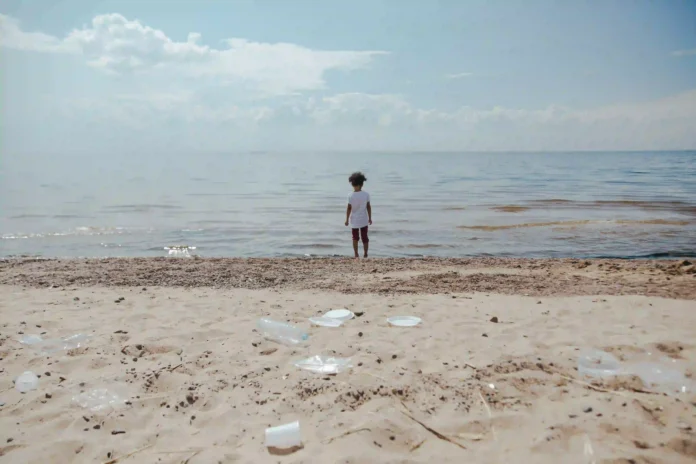Apart from producing a large volume of the food we eat and generating most of the oxygen we breathe, the ocean is also one of the largest natural carbon sinks on the planet. As a carbon sink, the ocean absorbs and stores chemical compounds containing carbon for an indefinite length of time. Thus, the ocean effectively removes carbon dioxide (CO2) from the atmosphere, a function that has become critical in humanity’s fight against climate change.
It is widely believed by scientists that the ocean absorbs 30 to 50% of the carbon dioxide produced by burning fossil fuels. Without all that carbon removed from the atmosphere, the climate crisis would be in a much worse situation than it is today.
Page Contents
Too much CO2 in our oceans
The ocean is one of the largest carbon sinks we have on Earth, but even it has a limit. As the levels of CO2 in our atmosphere continued to rise in the past decades, the amount of CO2 our oceans absorbed increased as well. The more CO2 there is in our oceans, the lower their pH levels will be, leading to ocean acidification. When oceans become more acidic, it becomes less habitable for marine organisms, which can have horrifying effects on the ecosystem.
Therefore, we must do all that we can to protect our oceans so they may continue to feed us, give us oxygen, and help us reduce the carbon dioxide in our atmosphere. The best way to do this is by reducing our carbon footprint.
What is a carbon footprint?
A carbon footprint is the total amount of greenhouse gases produced by an individual, organization, event, place, or product. Humans, in particular, leave a trail of carbon emissions in any activity that they do, hence the name “footprint”. The carbon footprint is a good measurement of how much someone or something contributes to carbon emissions. You can get a good estimate of how big your carbon footprint is by using a carbon footprint calculator, which will then allow you to pinpoint which parts of your lifestyle you should change.
Ways to reduce our carbon footprint
Given that the ocean comprises 70% of our planet, almost everything that we do, regardless of how unattached we think it is to the ocean, will affect it in one way or another. This means a candy wrapper you threw on the road can eventually find itself stuck in the throat of a marine organism, but it also means even your small actions can be of big help.
Switch to renewable energy
The accessibility of renewable energy has significantly improved in the past decades, but it still differs from one location to another. If you’re favored to live in a community where switching to renewable energy for your household is feasible, then you should start the transition immediately. Unlike energy from burning fossil fuels, renewable sources of energy like solar and wind energy don’t produce greenhouse gasses or polluting emissions.
Use cleaner fuel
If switching to renewable energy isn’t feasible in your circumstances, then your next best option is to use cleaner fuel. You can consider using motor vehicles designed to run on clean fuels such as biodiesel, hydrogen, and electricity. For cooking, you can switch to cleaner fuels such as biogas, LPG, electricity, and natural gas. Unfortunately, switching from traditional fuels is easier said than done, at least with vehicles. Electric vehicles are becoming cheaper and cheaper, but they remain a luxury for many people. In summary, you should use cleaner fuels for cooking or transportation when it’s accessible.
Avoid plastics
The manufacturing and incineration of plastics released an estimated 850 million metric tons of greenhouse gases in 2019. Even if those plastics weren’t burned, they would eventually release the carbon they contain when they naturally decompose. Given that they decompose incredibly slowly, they are great at damaging the environment, especially our oceans.
What you can do as an individual is to avoid plastic bottles, plastic bags, plastic food wrappers, plastic straws, or any product that uses non-biodegradable plastic. Obviously, this is easier said than done as almost everything today uses plastic. The important thing is to make the right choices whenever possible.
Support green businesses
A lot of you can do on your own to reduce your carbon footprint is reliant on how accessible greener options are. If more businesses offer plastic-free products and zero-carbon services, it will be a lot easier for more people to go green. If we want to incentivize green practices in businesses, we should support businesses that are already doing it. When given the opportunity, always choose a green business over others.
Conclusion
If everyone today decided to make a concerted effort to reduce their carbon footprint, carbon emissions would significantly drop. However, that’s an idealistic notion since going green isn’t viable for many people. Placing the responsibility of reducing carbon emissions solely on consumers is wrong and impractical. To save our oceans, we need to focus on big-ticket items like eliminating single-use plastics, decarbonizing the shipping industry, making renewable energy accessible to all, and abandoning the use of fossil fuels. Accomplishing these certainly requires the conjoined efforts of individuals, communities, governments, and the world at large.


